Bresser’s Corvette 10x50s have been well regarded as a general purpose pair of binoculars for some years. And they have now undergone a thorough ‘makeover’, including significant modernisation, which makes them essentially a new model.
When you first take the Corvette 10x50s out of the box, you’ll immediately notice the substantial feel.
This is partly due to the weight, at 940g, but a lot of what is plastic on budget binoculars is metal on these.
New to binocular astronomy? Find out more about binocular stats in our guide to the best budget binoculars, or find out how to use binoculars for stargazing.
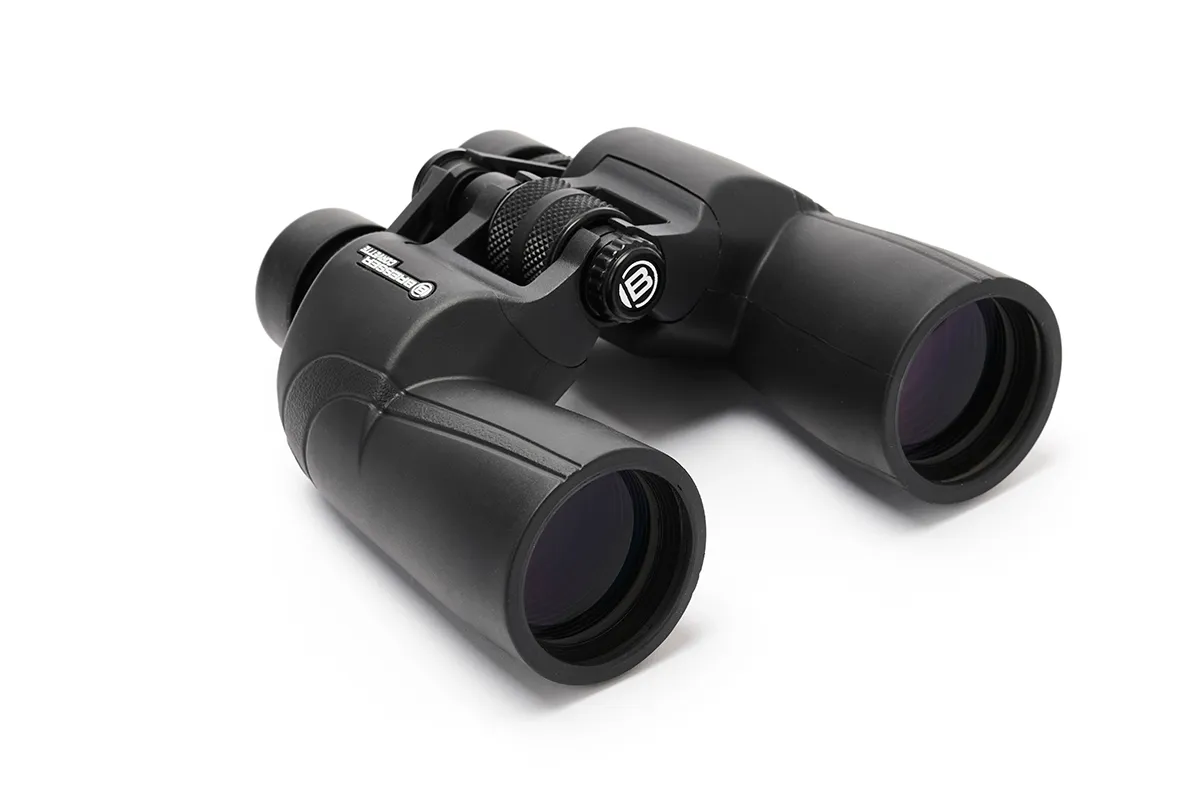
There is a selection of useful extras, including a nylon case, a 25cm-wide neck strap, a pair of tethered lens caps for the objective lenses, a tethered rain guard to protect the eyepieces, a microfibre cleaning cloth and an instruction booklet.
The wide centre-focus wheel and right eyepiece dioptre of the Corvette 10x50s are covered with rubber – with the texture and classy appearance of black-anodised knurled metal – and this allows you to have a good grip with either gloved or bare hands.
Along with the central hinge, these parts move smoothly, without any stiff spots.
The twist-up eyecups, on the other hand, are quite stiff, but this has an advantage. They don’t have click stops for different positions, but the stiffness means that they will stay put at whatever position you set them.
The cups are quite wide, though, so at the minimum interpupillary distance of 57mm (the distance between the pupils of your eyes), there is only 13mm between them, which may be too tight for some broad-bridged noses.
The objective lenses are set back into their cells by 11mm, which offers protection against bumps, while also reducing the likelihood of accidentally touching them.
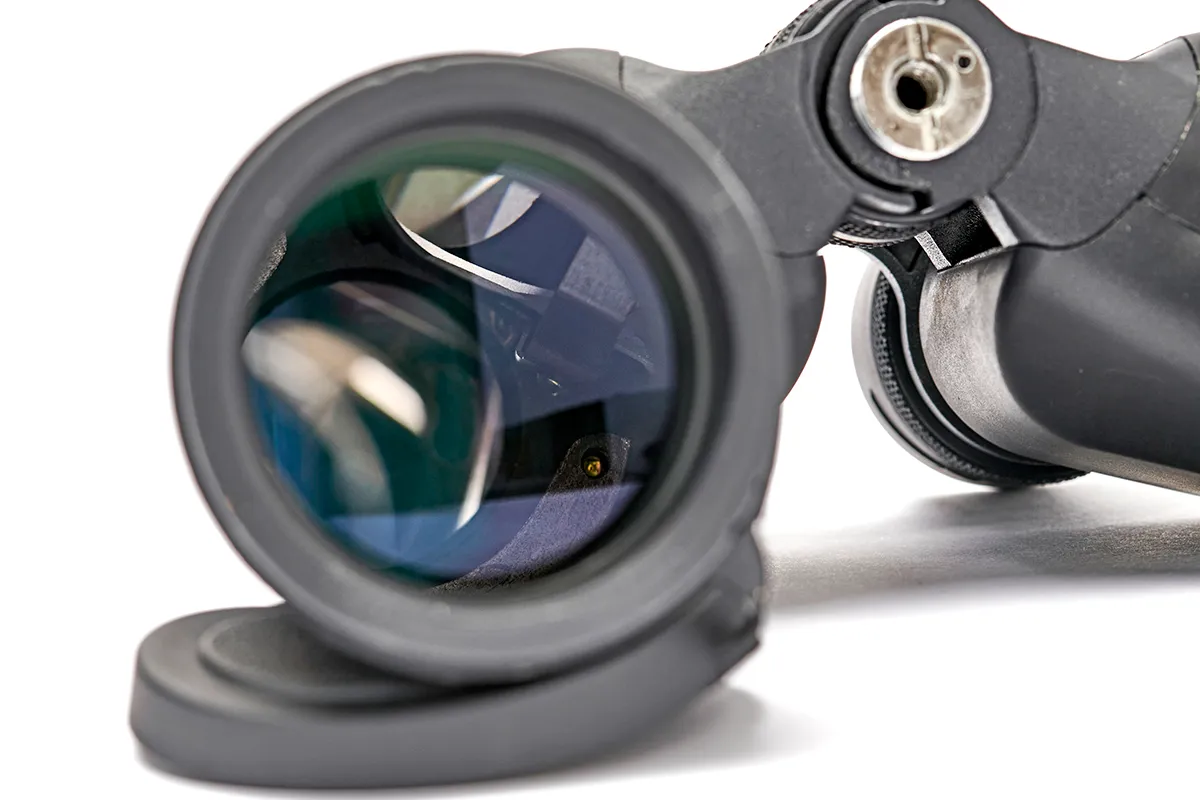
Although the clear aperture is 52mm, this is internally stopped down to an effective aperture of 46mm. This is usually done to sharpen the image at the expense of a slight loss of brightness.
When you shine a light into the objective lens, the reflections you see are consistent with the fully multi-coated specification.
Although the objective tubes are ribbed, the entrance to the prism assembly and the prism cages themselves are unblackened, which resulted in some contrast-reducing stray-light scattering when the Moon was on the edge of the field of view.
We also used the Moon to test chromatic aberration – an effect usually seen as unwanted coloured rings around brighter objects.
It is generally well controlled, with only a small amount visible at the centre of the field of view. Even near the edge it was unobtrusive.
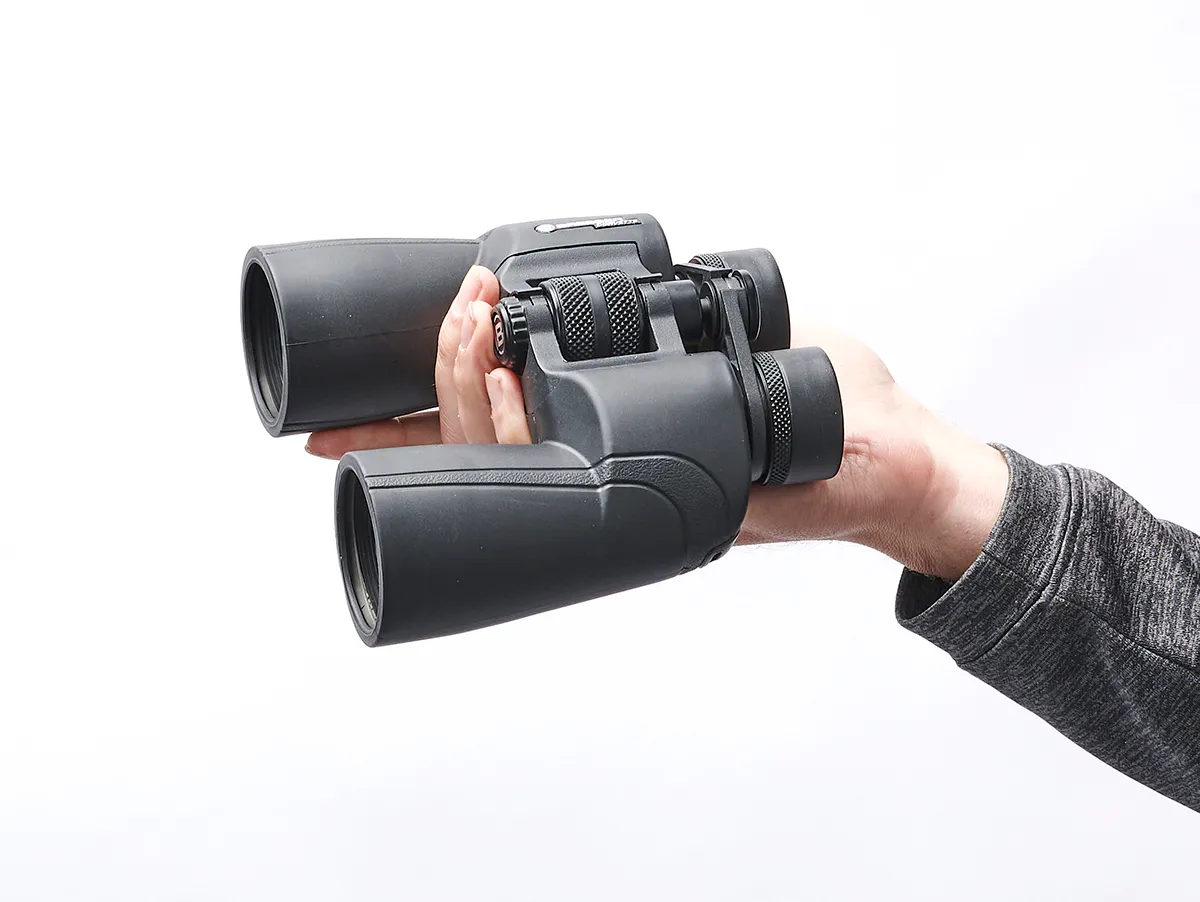
The precise focusing system on these binoculars is ideal for astronomy.
Our test showed that stars in the middle of the field of view snap to an obvious best focus, but those near the edge are degraded, mostly due to mild field curvature.
We were able to keep the components of the double star Albireo (Beta (β) Cygni), with 35 arcseconds separation, split within the central 75% of the field of view.
We found that the colour rendition was good in the large sweet spot in the middle of the field of view, but nearer the edge the colours started to become washed out.
Meanwhile, Jupiter showed a distinct disc and all four of its Galilean moons were visible when they were away from the gas giant’s glare.
Binoculars of this size excel on the larger open clusters and asterisms, and this was borne out by the lovely views we had of the Alpha Persei Cluster (Collinder 39) in Perseus, Kemble’s Cascade in Camelopardalis, and Eddie’s Coaster in Cassiopeia.
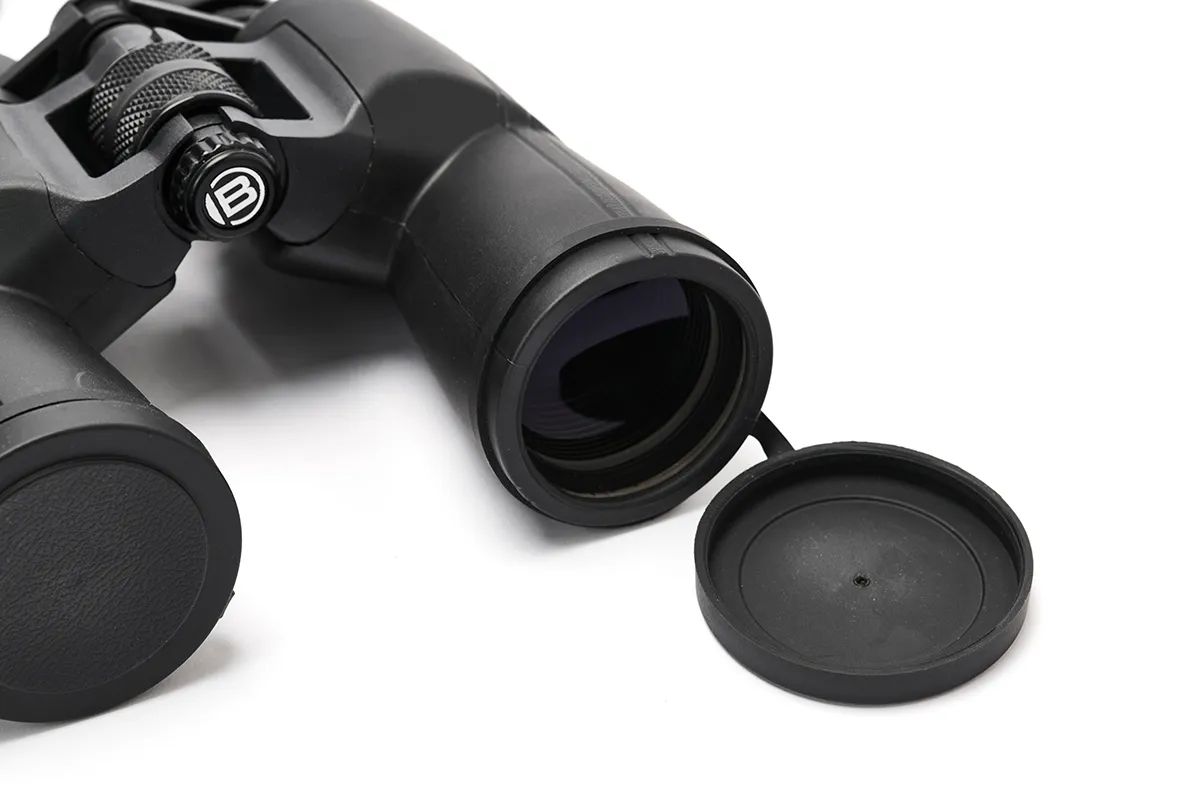
Looking southwest, we could hold IC 4756 and NGC 6633 in the same field of view and we could appreciate the contrast between these two fine open star clusters.
Once it rose above the neighbour’s roof, the Andromeda Galaxy, M31, looked magnificent in a crisp, moonless sky, and we could just make out its two faint companion galaxies.
Later, we tried the Triangulum Galaxy, M33, but this proved to be more difficult and appeared merely as a small region of slightly brighter sky.
Although these binoculars are quite heavy, at 940g, they’re not uncomfortably so.
They have a good balance, especially when you are gazing skywards, so extended hand-held observing stints are possible, especially if you observe while you are reclined.
Overall, the Bresser 10x50 Corvette will appeal to someone who wants a rugged, moderately-priced general-purpose pair of binoculars of decent quality, which will also be very useful for astronomy.
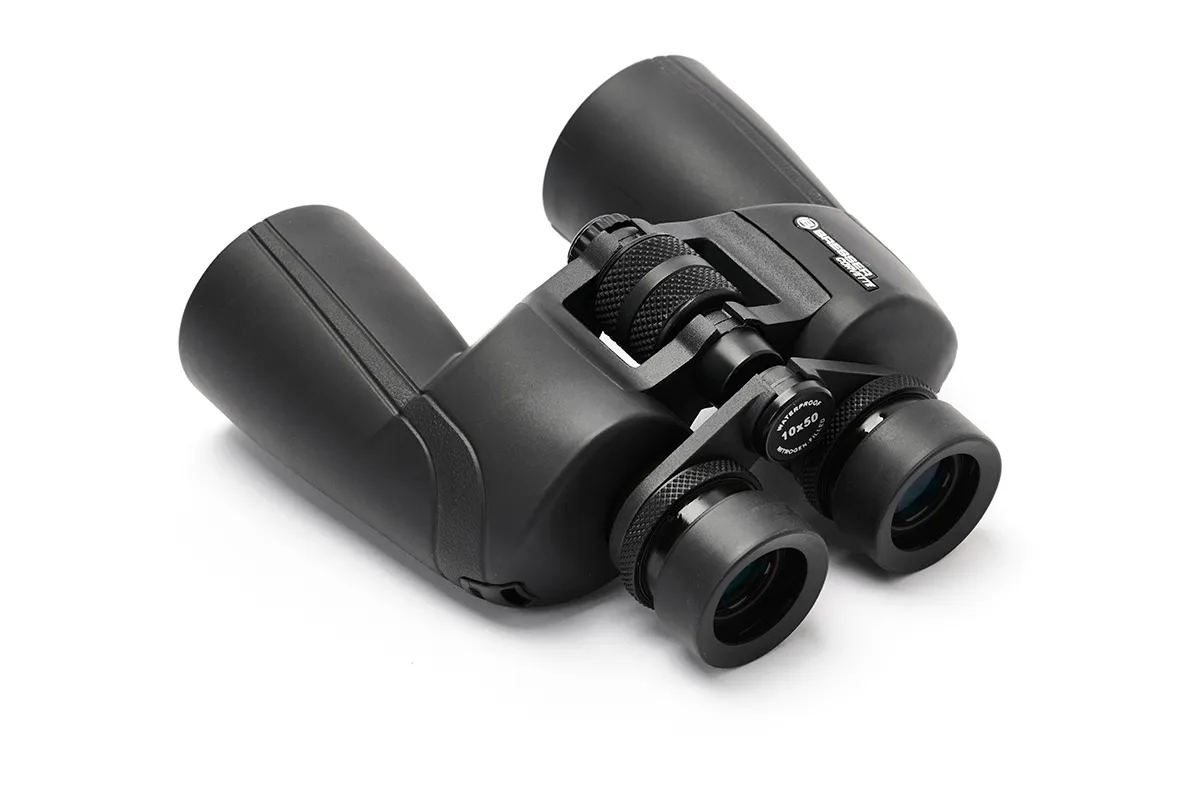
Bresser 10x50 Corvette's robust composition
The recent fashion to make binoculars as lightweight as possible comes at the expense of robustness.
Fortunately, Bresser has not fallen into this trap with the updated Corvette 10x50s, which retain the rugged characteristics of earlier models.
They boast a metal Bausch & Lomb-style body, which means that the prism housing and objective tube is a single casting for each side, so there are no separate objective tubes.
The body itself is covered with a 2mm-thick rubber armour, which gives ample protection against everyday use.
Many centre-focus binoculars suffer from a rocking eyepiece bridge, which can make them difficult to focus precisely, but this bridge is rock-steady in normal use.
Bresser has also shunned the fashion for having the prisms held in their housings with clips, which leaves them liable to shift at even a slight knock.
The prisms of the Corvette 10x50s are held in a proper prism cage, an altogether more robust design.
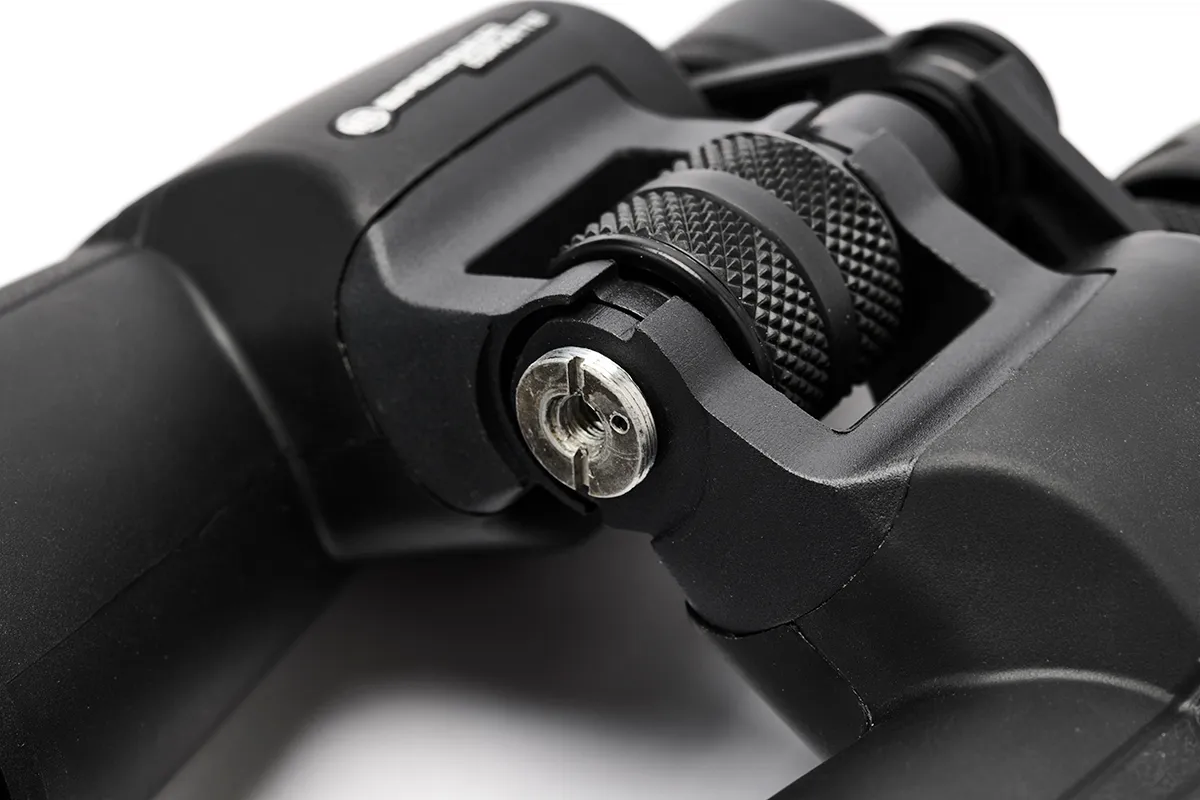
Bresser 10x50 Corvette: best features
1
Precise focus
Unusually, it takes one and a half rotations of the centre-focus wheel to go from one end of the focal range to the other. But this slow focusing makes it easy to achieve the precise focus that is essential when you are using binoculars for astronomy.
2
Waterproof and inert gas filled
Due to their nocturnal use, it is usual for astronomical binoculars to become damp with dew. If this moisture gets inside it can cause corrosion of metal parts and allow algae and fungus to grow on the optics. Waterproofing is the first line of defence, and the inert gas filling reduces the likelihood of damage from moist air.
3
Tripod-mountable
For 10x50s, these are quite a heavy pair of binoculars, so you might want the option of mounting them for a long stargazing session. Under a cover at the end of the hinge you will find a standard ¼-inch Whitworth mounting bush for an optional tripod adaptor.
4
Tethered lens caps
We particularly liked the tethered lens caps. They fit extremely well, so they won’t fall off when you use them. Being tethered, you won’t lose them and they’re always where you need them when you want to keep dew or dust off your lenses.
5
Anti-reflective coatings
We astronomers loathe losing light, so we want to ensure that whatever we capture makes its way to our eyes. Anything that is not reflected from the surface of a transparent element must be transmitted, so effective anti-reflective multi-coatings enable us to receive a maximum amount of the captured light.
Vital stats
- Price £115
- Optics Fully multi-coated
- Aperture 50mm
- Magnification 10x
- Prisms Porro, BaK-4
- Angular field of view 6°
- Focusing Centre focus
- Eye relief 16mm
- Interpupillary distance 57mm-72mm
- Weight 940g
- Supplier Telescope House
- Tel 01342 837098
- www.telescope house.com
This review originally appeared in the December 2019 issue of BBC Sky at Night Magazine.
